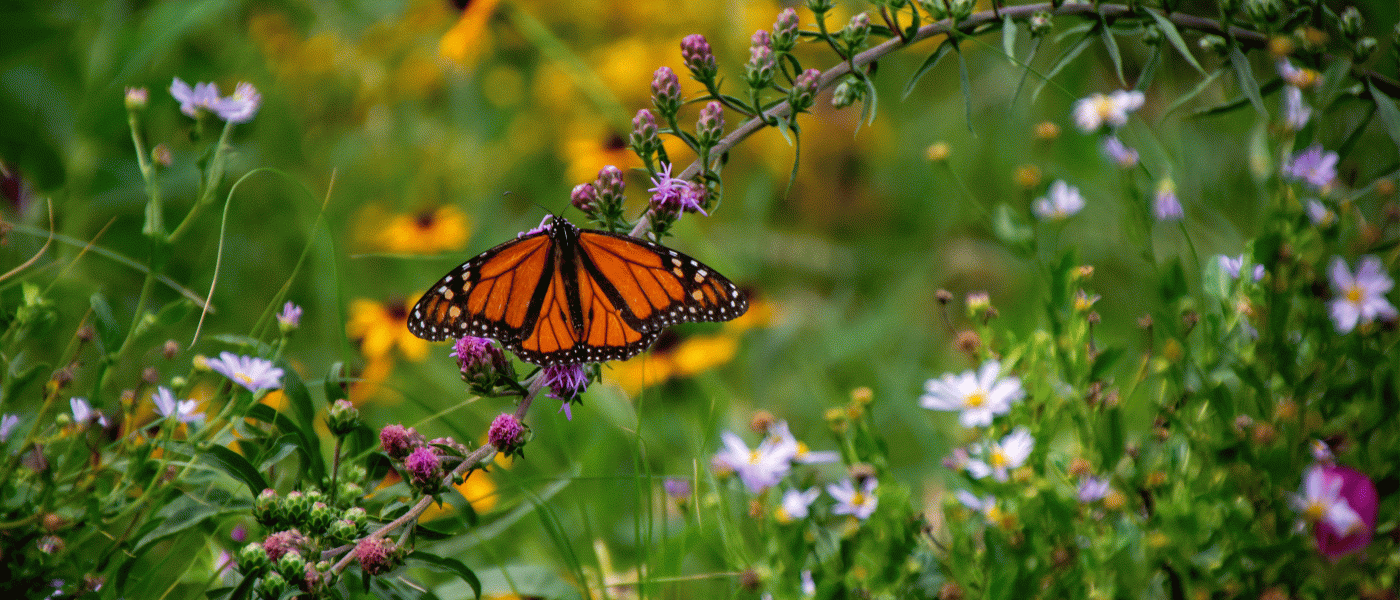Free Virtual Tour Resources for Teachers: Native Flora Garden
Brooklyn Botanic Garden’s Native Flora Garden provides habitat for wildlife of all kinds, including butterflies, bees, and wasps—pollinators! In the video below, curator Uli Lorimer explains the relationships at play in this small but diverse ecosystem and shares some good news about monarchs he has observed.
Extend the lesson with previsit activities, guiding questions during the viewing, and postvisit explorations.
If you need assistance with these resources, please contact [email protected].
Introduction to the Native Flora Garden
A single step into the Native Flora Garden and you forget you are in a formal botanic garden. At once a forest, an open meadow, pine barrens, and a bog, this part of Brooklyn Botanic Garden (BBG) looks like the land that it is—Lenapehoking, the home of the Lenape nation, the first people to live in this place, in reciprocity with the diverse natural communities that were established in this region long before any humans made it their homeland.
Native, or indigenous, plants are those that evolved and grow naturally in a particular region; they exist without direct or indirect human actions. How do we know which plants were here in Brooklyn before people lived here?
We have records, including drawings and written descriptions of the plants observed by people from European regions who began to arrive in this area of the world a thousand years ago. In addition to pictures and words in books, plants or plant parts were picked for herbariums, or collections of preserved plants.
But Lenape people have a body of knowledge of the plants, of all living beings and the environment, shared in an oral transmission that extends farther back than a thousand years, through generations to their ancestors who were the first human inhabitants of the place we now call New York City. From the Lenape, we know which plants were here before people.
The Native Flora Garden opened in 1911, just one year after Brooklyn Botanic Garden itself. Curator Norman Taylor planted trillium, may-apple, goldenseal, and blue cohosh, plants that were not often selected for cultivation in a garden. Taylor wanted visitors, the people of Brooklyn and New York City, to learn about the plants that were local to the land on which their city had been built.
The video “Pollinators in the Native Flora Garden” features Uli Lorimer, a former curator of the Native Flora Garden. Uli introduces us to the bees, butterflies, wasps, and flies—pollinators!—who are the “stars” of this film! Why is Uli, the curator who is a plant expert, introducing us to pollinators rather than plants? He knows that the plants will be introduced to us by their pollinators!
We are invited to observe closely and focus on the interactions between the insects and the flowers. How do they sense each other? How do they attract each other?
Uli is attentive to the needs of the plant communities in the forest, wetland, and meadow habitats, which in turn support and interact with communities of animals, communities of fungi, and communities of microorganisms including bacteria. He observes and takes note of their relationships, their dependence on each other, and seeks to understand how they might be affected by changes in the environment over time. Let’s observe with him!
Virtual Visit
The Viewing Guide offers time-stamped discussion prompts for this three-minute video. Choose whether to display closed-captions and select the full-screen option before screen sharing and playing the video on your streaming platform.
Learn More
Blog: All About Bugs! Bees, Bee-Mimics, and Pollinators of All Kinds


